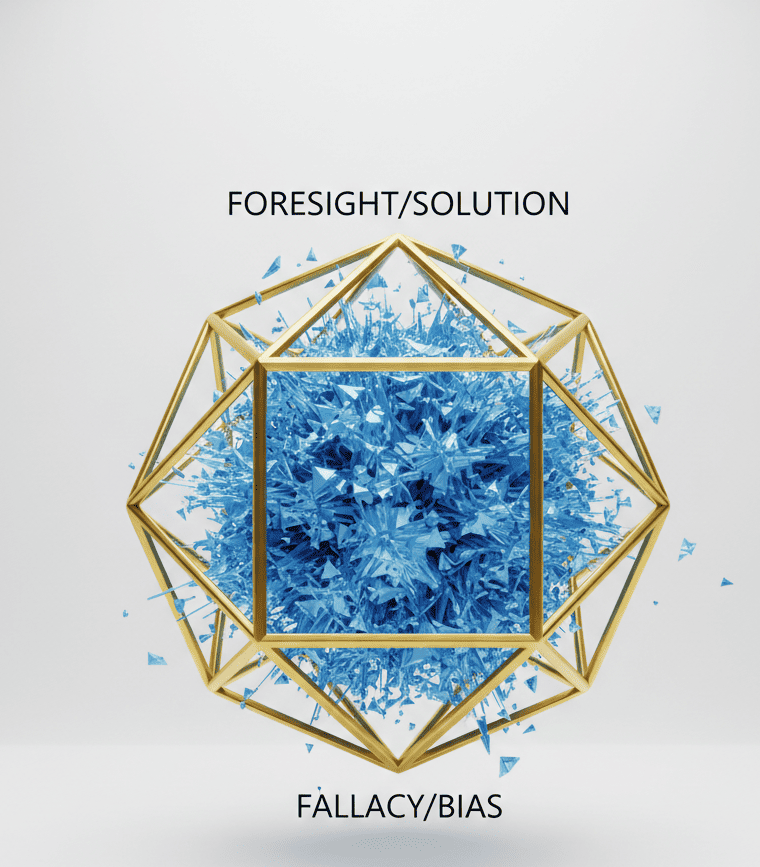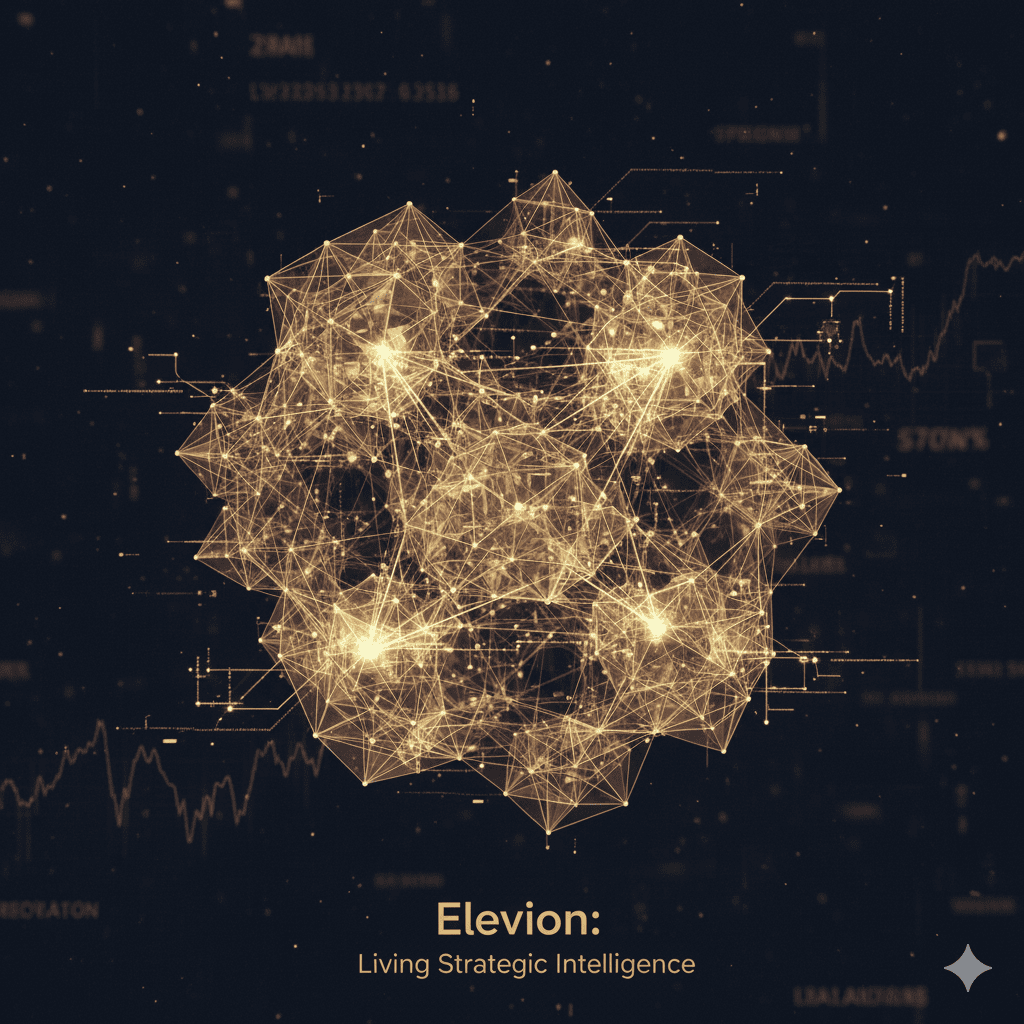
The Founder’s Fallacy: Counter-Intuitive Analysis of Strategic Blind Spots
Ambition is the Ultimate Vulnerability
The cognitive architecture that propels a founder to market dominance—unwavering conviction, pattern recognition velocity, and tolerance for asymmetric risk—simultaneously engineers their most catastrophic strategic exposures. This is not a character flaw; it is a structural inevitability. The same neural pathways that enable rapid decision-making under uncertainty create systematic blind spots to disconfirming evidence, non-linear market discontinuities, and organizational entropy. Traditional strategic planning frameworks fail because they treat these blind spots as information deficits rather than what they truly are: hardwired cognitive vulnerabilities that require algorithmic countermeasures.
The founder’s dilemma is irreducible: the velocity required to capture market position is inversely correlated with the reflective capacity needed to identify strategic decay. You cannot simultaneously operate at the speed of execution and maintain the diagnostic distance required for forensic strategic analysis. This is why even the most intellectually sophisticated founders replicate predictable failure modes—not from lack of intelligence, but from the structural impossibility of self-auditing while under cognitive load. The solution is not more discipline or better advisors. It requires an autonomous diagnostic infrastructure that operates independent of founder psychology: a system capable of causal inference, counterfactual modeling, and continuous strategic stress-testing without the distortions of confirmation bias or sunk cost fallacy.

The Three Systemic Fallacies That Create Strategic Decay
Fallacy 1: The Correlation-Causation Trap
Diagnosis: Founders systematically conflate historical correlation with predictive causation, building strategic roadmaps on pattern recognition rather than causal mechanism identification. When a growth metric improves following a product launch, the founder attributes causality to the launch itself—ignoring confounding variables, temporal coincidence, or exogenous market conditions. This creates a strategic planning apparatus built on narrative coherence rather than causal validity. The organization then optimizes for replicating correlational patterns that may have zero causal relationship to the outcomes being pursued, resulting in capital allocation toward initiatives that are statistically associated with past success but mechanistically disconnected from future value creation

Resulting Exposure:
- Strategic lag: Decision-making architecture optimized for historical patterns becomes structurally incapable of detecting regime changes or non-linear market discontinuities
- Misallocated capital: Investment flows toward initiatives with high correlational signal but zero causal efficacy, creating opportunity cost compounding
- Vulnerability to market discontinuities: Absence of causal models means the organization cannot distinguish between durable competitive advantages and temporary market conditions
- False confidence in replication: Belief that past success formulas are transferable leads to catastrophic failures in adjacent markets or scaled operations
Fallacy 2: The Operational Myopia (The ‘Build It All’ Bias)
Diagnosis: The founder’s identity becomes fused with operational execution, creating a psychological inability to distinguish between activities that require their unique cognitive signature and those that should be systematized, delegated, or eliminated. This is not mere micromanagement—it is a fundamental misunderstanding of where founder value concentrates. The result is an organizational architecture where the founder becomes the primary bottleneck, with critical path dependencies running through their decision-making capacity. As the business scales, this creates exponential friction: every new market, product line, or operational complexity requires founder bandwidth that no longer exists. The organization develops learned helplessness, waiting for founder input on decisions that should be encoded in systems, playbooks, or autonomous agents.
Resulting Exposure:
- Replication friction: Inability to scale operations beyond founder capacity creates hard ceiling on growth velocity and market expansion
- Talent burnout: High-agency employees atrophy waiting for founder approval; top performers exit due to lack of decision-making authority
- Failure to achieve Operational Alpha: The business cannot extract efficiency gains from systematization because critical processes remain locked in founder tacit knowledge
- Strategic opportunity cost: Founder cognitive bandwidth consumed by operational execution prevents allocation to high-leverage strategic activities (market positioning, capital architecture, ecosystem development)
- Organizational fragility: Business continuity becomes existentially dependent on founder availability, creating catastrophic single-point-of-failure risk


Fallacy 3: The Narrative-as-Defense Delusion
Diagnosis: Founders mistake brand narrative for brand moat, believing that compelling storytelling creates defensible competitive advantage. This cognitive error stems from conflating customer awareness with structural lock-in. A powerful brand story may drive initial customer acquisition, but without hard-coding that brand value into the operational and economic architecture of the business, it provides zero protection against competitive displacement. The narrative exists as a marketing artifact rather than being embedded in the customer experience through proprietary data loops, switching costs, or ecosystem dependencies. Competitors can replicate the emotional positioning while offering superior unit economics, leaving the founder confused about why their “strong brand” failed to prevent customer defection.
Resulting Exposure:
- Low pricing power: Absence of structural differentiation forces competition on price rather than value, compressing margins and commoditizing the offering
- Easily replicable customer experience: Brand promise not encoded in proprietary systems means competitors can reverse-engineer the experience without the associated customer acquisition cost
- Failure to protect Customer LTV: Without structural switching costs or compounding value delivery, customer relationships remain transactional and vulnerable to competitive arbitrage
- Narrative-reality gap: As the business scales, the brand promise becomes increasingly disconnected from actual customer experience, creating reputational fragility and negative word-of-mouth compounding
- Inability to capture ecosystem value: Brand exists as isolated marketing asset rather than platform for network effects, data accumulation, or third-party value creation

From Blind Spot to Autonomous Foresight
The structural remedy for these systemic fallacies is not incremental improvement in strategic planning discipline—it requires replacing founder intuition with algorithmic foresight at the architectural level. Elevion’s methodology deploys three countermeasures specifically engineered to neutralize the cognitive vulnerabilities detailed above:

Operational Alpha Extraction
We forensically audit the founder’s activity portfolio to identify which decisions require their unique cognitive signature versus those that should be systematized through playbooks, decision algorithms, or autonomous agents. This creates a scalable organizational architecture where founder leverage compounds rather than dilutes as the business grows. The founder’s cognitive bandwidth is reallocated from operational execution to high-leverage strategic positioning.


Brand Moat Engineering:
We transform brand narrative from marketing artifact into structural competitive advantage by encoding brand value into the economic and operational architecture of the business. This includes designing proprietary data loops that compound with usage, engineering switching costs that increase customer LTV, and building ecosystem dependencies that create network effects. The brand becomes a structural barrier rather than a storytelling exercise.
This is not consulting—it is the installation of an autonomous diagnostic infrastructure that operates independent of founder psychology. Our AI-driven agents continuously stress-test strategic assumptions, identify emerging blind spots, and model counterfactual scenarios that reveal hidden vulnerabilities before they metastasize into existential threats. The output is not a static strategic plan but a living system of Autonomous Foresight that evolves with market conditions and organizational complexity.

The Call to Strategic Rectification
The founders who achieve enduring market dominance are not those with the strongest conviction or the most compelling vision—they are those who build structural countermeasures against their own cognitive vulnerabilities. Strategic blind spots are not eliminated through self-awareness or advisory input; they require algorithmic infrastructure that operates independent of founder psychology. The question is not whether your business contains these systemic fallacies—it does. The question is whether you will identify and rectify them before they compound into irreversible strategic decay, or whether you will join the archive of brilliant founders whose ambition became their ultimate liability.